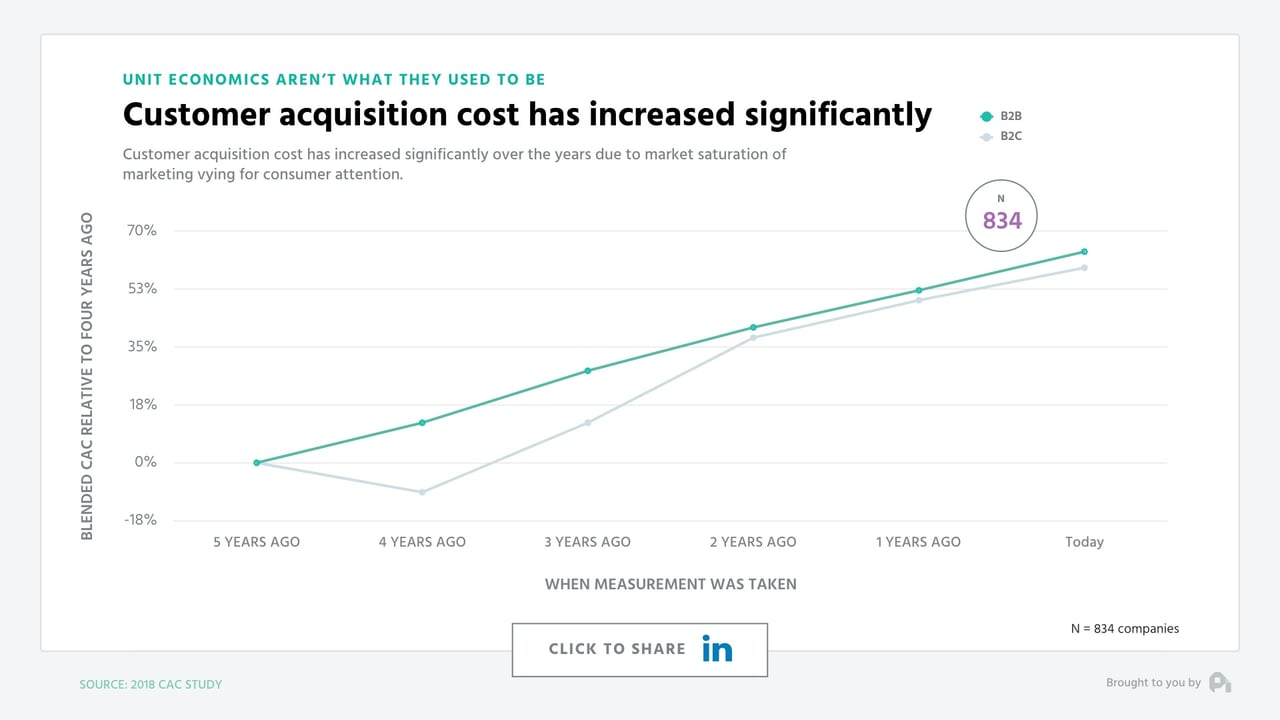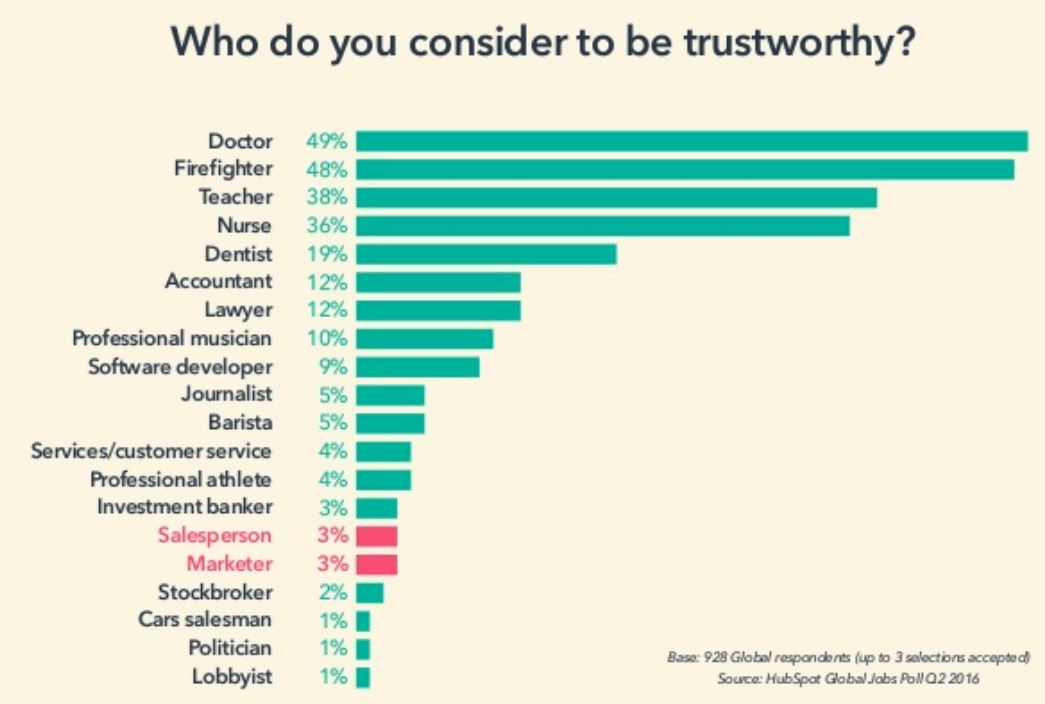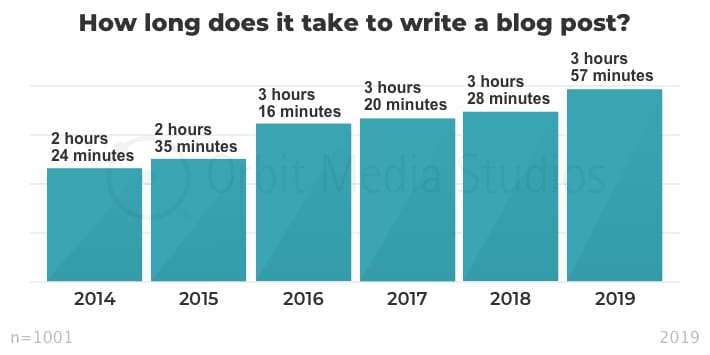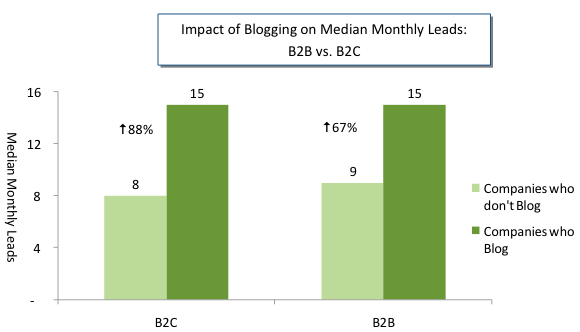Customer acquisition seems to get harder and harder each year...doesn’t it?
In the last 5 years, the cost of acquiring a new customer has gone up by a whopping 50%!
Add to that the fact that people simply don’t trust businesses, marketers and salespeople as much as they used to. Take a quick look at the graph below...Do you see that way down there? 
Only 3% of people say they actually trust marketers and salespeople 😮
We are considered barely more trustworthy than POLITICIANS. In the era of Trump, Brexit and Zuma that’s a pretty scathing indictment.
I guess it’s time to throw in the towel and start your own brand of CBD water?
Not quite!
We just need a small shift in perspective.
Instead of focusing on why your business, product or service is the best, cheapest, or fastest rather focus on helping your customer be successful.
Because if your customer wins, you win!
An important part of your customer’s success starts with your website.
Download: The Complete Guide to Customer Acquisition. It's for teams looking to drive sustainable growth and success.
In this blog, we are going to look at four relatively simple website optimisations to utilise your website content to help boost your customer acquisition:
- Understand your customer’s goals
- Remove the hurdles
- Content is king
- Let your customers be heard
P.S Feel free to use this list and skip ahead to the sections that interest you most.
1. Understand your customer’s goals
We all buy products or services to solve a particular problem we may have or to help us achieve a certain goal.
As a business, it is your job to help your customers get from their current state of having a problem to their desired state of having no problem or at the very least one less problem.
Your website plays a pretty vital part in helping prospective customers decide if you can help them solve their current challenge.
To do this effectively you have to really understand what drives your customers.
- Why do your best customers love your business?
- Why did they decide to work with you and not one of your competitors?
- What brought them to your site?
- What free tool or piece of content converted them to a lead?
Once you are armed with what makes your customer tick, go back and take stock of your website.
- Does your website do a good job of displaying that to new prospects
- Does your home page answer the prospects most pressing questions or do they have to dig around or speak to one of your salespeople before they get the information they are looking for?
- Are your product and services pages overly technical or vague?
By simply understanding your customers’ goals you can translate that into your website by addressing them head-on, making important information easy to find or even building out new pages.
The easier it is for people to answer the questions they have about you and your business the easier it’ll be for them to start doing business with you.
2. Remove the hurdles
This might seem obvious but is often overlooked as a way to boost your customer acquisition.

Ask yourself, “How many steps does it take to do business with us?”
Can that process be simplified?
It is often the case that the more complex a solution is, the more complex the sales process is. Every step is a hurdle and every hurdle, in this case, is an opportunity to innovate.
In many cases, removing just one or more of those hurdles has lead to entire industries being shaken up. Think Spotify, Uber, Netflix...These companies changed entire industries by making it easier for us to listen to music, catch a taxi and watch movies at home.
I’m not saying you need to create the next Spotify or Uber but the principle still applies. Making it easier for people to buy or consume your product is good for your customer, is good for your business and might even be good for your industry.
Your website is a great starting point for this. Offering a part of your product or service for “free” for users to try is a great way to overcome some of those initial concerns potential customers might have.
Take BlindCraft, an online window blinds retailer, based here in Cape Town in South Africa. A big challenge with buying blinds online is that people still like to touch the fabrics and compare how certain colours work in a particular room. 
To remove that hurdle and make customers more comfortable they added free sample swatches to the mix. Now their potential customers get to take a closer look at their swatches and try their service before actually buying anything.
Now, apply this hurdle removing mindset to your website:
- Does your sales process require customers to speak to a rep or consultant? Why not make their calendar available on your site so that people can book meetings quickly and easily? You can use HubSpot or Calendly for this.
- Or perhaps you have an awesome new SaaS product that’s going to change the world. Why not offer a free version or record a demo and put it on your home page?
- Maybe the majority of your website traffic is on mobile but your site is poorly optimised for mobile. Why not take the time to improve the mobile user experience, increase page speed to reduce the frustration it can cause.
Whatever shape or form your hurdles may take, the more you can remove the better it will be for your customers and your business.
3. Content is still king
I generally encounter three types of responses when I bring up content marketing…
- “Do you mean blogging? Everyone and their uncle blogs these days...Isn’t it overdone?”
- “Yeah, we used to have a blog but it has been neglected for the last while. It was really hard to keep producing all that content”
- “Content marketing doesn’t work. We focus on paid because it gives us instant results.”
These objections are not unfounded...
In 2019, Wordpress users produced a staggering 70.5 million new blog posts and over 52 million new comments each month.
That’s a lot of content to compete with!
On top of that, according to the team at Orbit Media, blogging takes 64% more time than it did in 2014.

This increase makes sense since our blog posts have steadily been increasing in length since 2014. 54% longer to be exact. Up from an average of 808 words per blog to 1236 per post.
At Uku our own blog posts hover between 1500-2000 words.
It is true that creating good content requires more time, effort, and money than ever before. And with 70.5 million blog posts each month, the odds seem to be against us.
You’re probably thinking that I’m making a pretty poor case for content marketing but if you keep reading I’ll try to turn this around for you.
Here are some critical facts you need to know about content marketing:
- B2B and B2C businesses that blogging consistently generate on average 88% and 67% more leads respectively than those that don’t - Neil Patel

- HubSpot research shows that content performs well over time. Some older blog posts on evergreen topics account for 38% of your total blog traffic.
- It costs 30% more to acquire a customer through paid than with content (organic).

- PPC campaigns are not a cost-effective long-term strategy. Once you stop paying your traffic and leads dry up. Content, however, continues to live on into perpetuity, long after you have paid to produce it.
- 70% of internet users want to learn about products through content vs traditional advertising.
The simple truth is that although content takes a little longer to produce results, it is still more effective than PPC over the long-term (12-18 months).
It is significantly cheaper, continues to produce results long after it has been paid for, and is very effective, 67%-88% more effective in fact, at lead generation than if you didn’t use content marketing at all.
So, go take a look at your company blog. When was the last time you posted anything? Why not take what you learnt from your customers in step 1 of this blog and translate that into some helpful relevant content.
Blogs, videos, infographics, podcasts, ebooks...They are all valuable and very effective.
It’s as simple as that.
Need help putting your content strategy together? Take a look at our free content marketing strategy template. You can download your copy here 🚀
4. Let your customers be heard
Last but not least take a look at the case studies on your website.
Ask yourself two questions:
- Are these case studies relevant?
- Are they generic or specific?
FYI, here are some good case study examples from HubSpot.
Let’s start with this first question.
Are your case studies still relevant?
You might be thinking “Well, no we don’t sell that product any more but why does that matter. It still shows what we’ve done in the past. Right?”
That’s pretty logical and you would be right. Showing prospective customers who you have worked with in the past is very valuable. Specifically, if some of your clients are well known in your industry.
But, other than some bragging rights, how useful is that case study in helping prospective customers decide if you are able to solve their specific problem.
You might, for example, run a food company that used to distribute the finest Swiss cheese to Mr Grocers retail stores but have over the last few years switched over to sell only dairy-free cheese to the growing vegan market.
How useful would that Swiss cheese case study be for your current business?
I bet if you updated your Mr Grocers case study to be more relevant to your current vegan cheese offering it would be way more effective and relevant to your vegan cheese buying market.
Are they generic or specific?
It’s all in the detail!
If your case studies are too generic or light then you are missing an opportunity to give prospective customers the answers they are looking for or fail to differentiate yourself from your competition.
The more detailed and specific your case studies are the easier it will be for the reader to put themselves in your customer’s shoes. They will most likely have very similar challenges and since you have solved this problem before for someone else, you should be the perfect fit to solve it for them too.
Take a look at our most recent case study 👉 here.
As people read your case studies, that will hopefully be more specific, they will get a better sense not only of what you do but also how you do it. They get a little preview of what it might be like to work with you and if that aligns with their own company and processes.
Lastly, getting specific will also help disqualify some people. This saves valuable time and energy early on in the sales process as opposed to only figuring out in the middle or worse the end of your process that in fact, you don’t quite offer what they were looking for.
In the end, your case studies should resonate with your ideal clients, provide transparency and help differentiate you from others.



